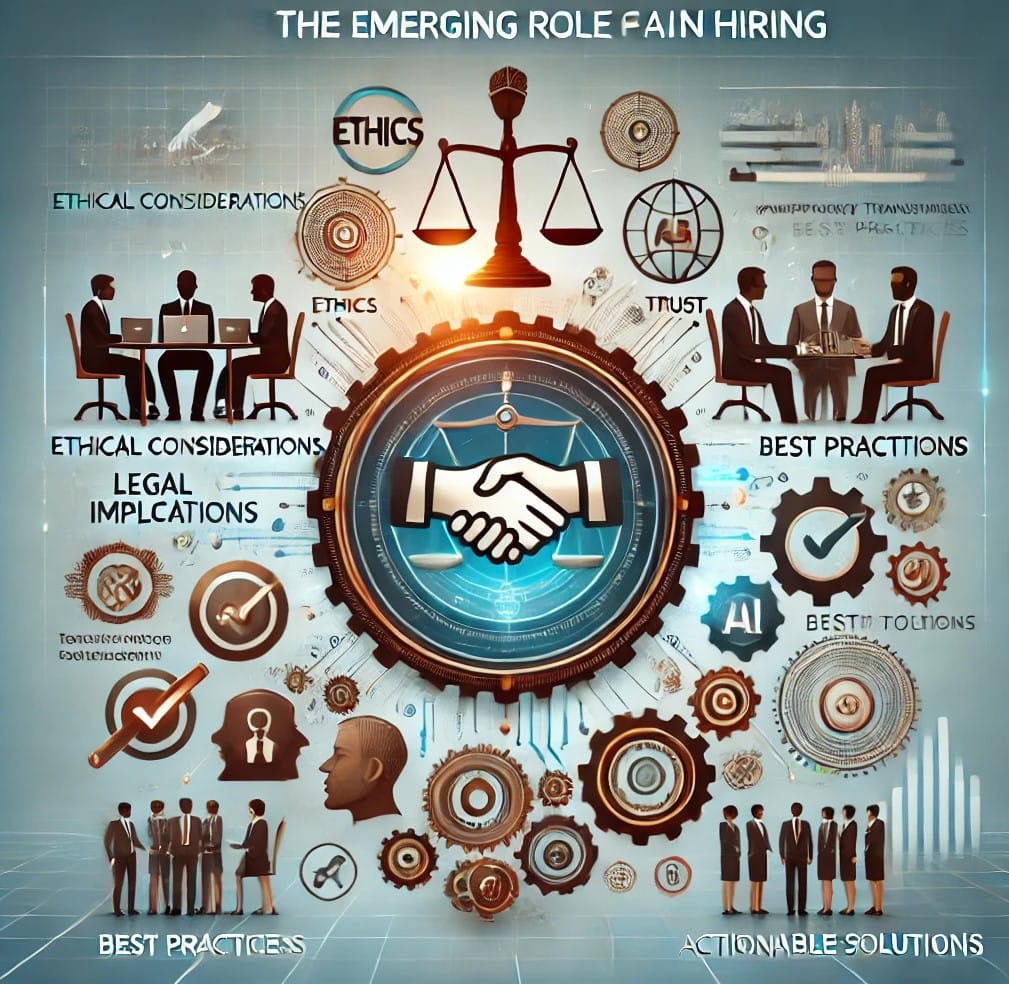
Best Practices for Using AI in Executive Recruitment
Executive recruitment is a nuanced process where precision, ethics, and strategy intersect. Integrating AI into this space can offer remarkable advantages, but it also requires a thoughtful approach to ensure successful and responsible outcomes. This section outlines best practices to harness the power of AI in executive hiring while maintaining the human touch essential for leadership roles.
1. Define Clear Objectives for AI Integration
AI tools should complement, not replace, human expertise in executive recruitment. Clearly define how AI will support your process:
- Screening: Use AI to identify patterns in candidate data that align with leadership success factors.
- Skill Matching: Leverage AI to compare candidate profiles against job requirements objectively.
- Candidate Insights: Apply AI to analyze leadership styles, values alignment, and cultural fit through structured assessments.
Best Practice: Ensure that every AI implementation aligns with your organizational goals and leadership competencies.
2. Prioritize Bias Mitigation
AI systems can inadvertently perpetuate biases present in training data. In executive recruitment, such biases can have significant repercussions.
Steps to Mitigate Bias:
- Use diverse and representative datasets to train AI tools.
- Conduct regular audits to identify and correct biases in AI outcomes.
- Employ explainable AI (XAI) to understand decision-making processes and ensure they align with fairness standards.
Best Practice: Combine AI insights with human oversight to evaluate candidates holistically and equitably.
3. Enhance Candidate Experience
Executive candidates are often highly sought-after professionals with expectations of respect, transparency, and personalization throughout the hiring process.
Ways to Improve Candidate Experience:
- Provide clear explanations of how AI is being used in the recruitment process.
- Offer candidates opportunities to review and provide feedback on AI-driven assessments.
- Use AI to personalize communication, such as tailoring interview invitations or providing role-specific insights.
Best Practice: Ensure AI enhances, rather than detracts from, the professional and respectful treatment of candidates.
4. Combine AI with Human Judgment
AI excels at processing large volumes of data, identifying patterns, and providing objective insights. However, leadership roles require evaluations that extend beyond data points, encompassing emotional intelligence, cultural fit, and vision alignment.
Key Considerations:
- Use AI as a tool to support, not replace, recruiter intuition and experience.
- Conduct in-depth interviews and reference checks to assess qualities AI cannot measure, such as adaptability, empathy, and strategic thinking.
- Encourage decision-making panels to consider AI findings alongside qualitative assessments.
Best Practice: Balance AI-driven data analysis with the nuanced, relational insights only humans can provide.
5. Ensure Data Privacy and Compliance
Handling executive candidate data comes with increased sensitivity due to the high-stakes nature of these roles. Maintaining privacy and compliance is critical.
Steps to Safeguard Data:
- Limit AI access to only the data necessary for decision-making.
- Encrypt and anonymize sensitive candidate information where possible.
- Ensure compliance with regional data privacy regulations (e.g., GDPR, CCPA).
Best Practice: Be transparent with candidates about data usage and uphold stringent privacy standards.
6. Continuously Improve AI Processes
AI in executive recruitment is a dynamic field that evolves rapidly. Regular evaluation and improvement of AI tools are essential to keep up with industry trends and ethical standards.
Actions for Continuous Improvement:
- Gather feedback from hiring managers, candidates, and recruiters on the AI-driven process.
- Update AI algorithms and datasets regularly to reflect changing market and leadership trends.
- Partner with AI vendors committed to innovation, fairness, and accountability.
Best Practice: Treat AI as a learning system, refining its processes and outcomes to better serve organizational needs.
7. Cultivate Internal Expertise in AI-Driven Recruitment
Empowering HR and recruitment teams to effectively use AI tools ensures optimal results.
Training Focus Areas:
- Understanding AI capabilities and limitations.
- Recognizing ethical and legal considerations.
- Leveraging AI insights to inform decisions without over-reliance.
Best Practice: Build a team of AI-literate HR professionals who can integrate technology seamlessly with traditional recruitment methods.
To Wrap Up
The integration of AI into executive recruitment offers unparalleled opportunities to enhance efficiency, objectivity, and candidate experience. By following these best practices, organizations can harness AI responsibly, ensuring that technology supports—not undermines—the integrity and effectiveness of their hiring processes. Combining the precision of AI with the nuance of human judgment creates a powerful partnership for identifying transformative leaders.
Contact: peter@fullspectrumleadership.com
Peter Comrie of Full Spectrum Leadership
Tags: #AI, #AI Integration. #Leadership, #Future of AI, #Peter Comrie
